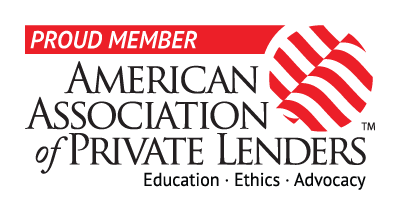Bridge Loans vs. Traditional Mortgages: Which is Right for Your Investment Strategy?
Navigating Florida’s real estate investment market can be challenging, especially when it comes to securing the right financing. The decision between a bridge loan and a traditional mortgage depends largely on your financial needs and investment strategy. In this blog, we break down the pros and cons of each option to help you determine the best fit for your next investment. Plus, discover how Nexos Invest can guide you toward tailored financing solutions to support your real estate ventures.
Understanding Bridge Loans and Traditional Mortgages
Choosing the right financing is crucial when investing in real estate, particularly in dynamic markets like Florida. Two common options for investors are bridge loans and traditional mortgages. While both provide the necessary funds to acquire property, they serve distinct purposes and align with different investment strategies. Let’s explore their key features and benefits, along with real-world examples to help you make an informed decision.
What Is a Bridge Loan?
A bridge loan is a short-term financing solution designed to provide immediate cash flow until more permanent financing is secured. Real estate investors often use bridge loans to quickly purchase new properties while waiting to sell an existing one.
Key Features of Bridge Loans:
- Short-Term Duration: Typically ranges from six months to two years.
- Higher Interest Rates: Due to their temporary nature, bridge loans often come with higher rates than traditional mortgages.
- Fast Access to Capital: Ideal for investors who need to act quickly on opportunities.
Pros of Bridge Loans:
- Speed and Flexibility: Bridge loans provide funding within days or weeks, unlike traditional mortgages, which may take months.
- Leverage Equity: Allows investors to leverage equity from existing properties to finance new acquisitions.
- Competitive Edge: Quick access to funds can give you an advantage in fast-paced markets like Florida.
Cons of Bridge Loans:
- Higher Costs: Expect higher interest rates, fees, and potential balloon payments.
- Short Repayment Term: Requires a clear exit strategy, such as refinancing or selling the property, to repay the loan on time.
What Is a Traditional Mortgage?
A traditional mortgage is a long-term financing option commonly used for homeownership and real estate investments. It’s best suited for investors planning to hold onto a property for an extended period.
Key Features of Traditional Mortgages:
- Long-Term Structure: Typically 15 to 30 years.
- Lower Interest Rates: Generally more affordable than bridge loans.
- Lengthy Approval Process: Involves thorough underwriting, credit checks, and financial documentation.
Pros of Traditional Mortgages:
- Lower Monthly Payments: Thanks to lower interest rates and longer repayment terms.
- Stability: Fixed-rate mortgages offer consistent monthly payments.
- Long-Term Affordability: Ideal for buy-and-hold investors looking for steady, predictable costs.
Cons of Traditional Mortgages:
- Lengthy Approval Process: Traditional mortgages often require weeks or even months to finalize.
- High Down Payments: Investment properties may require 20% to 30% down.
- Strict Lending Criteria: Lenders may require strong credit, stable income, and detailed financial records.
Real-World Scenarios: Which Loan Is Best?
To illustrate how bridge loans and traditional mortgages work in practice, let’s explore some real-world examples from Florida’s real estate market.
Scenario 1: Fix-and-Flip Investment
Investor Profile: You’re looking to purchase a distressed property in Miami, renovate it, and sell it within a year.
Best Option: Bridge Loan
- The short-term nature of a bridge loan aligns perfectly with your fix-and-flip timeline. Since you plan to repay the loan upon selling the property, the higher interest rate is manageable.
Scenario 2: Long-Term Rental Property
Investor Profile: You want to buy a multi-family property in Fort Lauderdale to generate passive rental income.
Best Option: Traditional Mortgage
- A traditional mortgage offers stable payments and long-term affordability, making it ideal for your buy-and-hold strategy.
Scenario 3: Bridging the Gap Between Sales
Investor Profile: You find a promising investment property in Orlando before your current property sale is finalized.
Best Option: Bridge Loan
- A bridge loan allows you to secure the new property while waiting for the sale of your existing one, helping you avoid missing out on a time-sensitive opportunity.
How Nexos Invest Can Help
Nexos Invest specializes in helping investors navigate Florida’s competitive real estate market. Whether you’re pursuing short-term flips or long-term rentals, we offer tailored financing solutions to match your goals. From fast bridge loans to affordable traditional mortgages, our team is here to guide you every step of the way.
Why Choose Nexos Invest?
- Expert Guidance: Our experienced professionals will help you choose the financing option that best fits your strategy.
- Fast Funding: Need to close quickly? Our bridge loan options are designed to expedite the process.
- Tailored Solutions: We offer customized financing plans to ensure you have the liquidity you need.
Choosing between a bridge loan and a traditional mortgage depends on your investment goals, timeline, and risk tolerance. Bridge loans provide quick, flexible financing for time-sensitive projects, while traditional mortgages offer long-term stability and affordability.
At Nexos Invest, we’re dedicated to helping you maximize your returns by selecting the right financing strategy. Contact us today to learn more about your options and take the next step toward your real estate investment success.
Ready to make your next investment move? Let’s talk financing.










